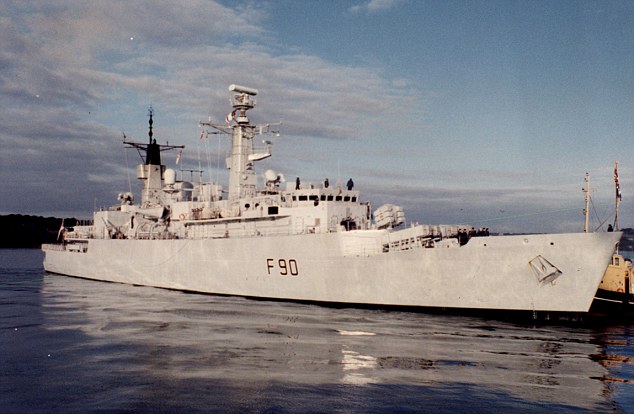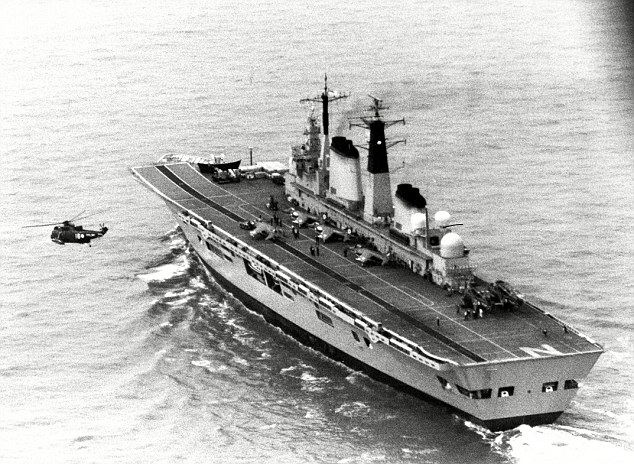The startling revelation is contained within new eyewitness accounts of the tense days aboard anti-submarine frigate HMS Brilliant during the 1982 conflict in the southern seas.
Radar on the Royal Navy ship was unable to distinguish between attacking 'Wolf Packs' of subs and a pod of whales.
In one instance, two of the mammals were killed by torpedoes and the third was attacked by one of the ship's helicopters.

In an extract from his experience of the Falklands War, he wrote: 'During the day we went to Action Stations a number of times as we were receiving reports of enemy aircraft taking off from their bases on the mainland. They were chased off by our CAP (combat air patrol).

The brush with whales was not a rare occurrence, judging by the testimony of HMS Brilliant's Captain John Francis Coward.
Recollection on instance, he wrote: 'One night Brilliant went chasing submarines, which proved rather less than successful. I had received a typical Woodward signal: "An aircraft has reported sighting a submarine twenty miles north of Port Stanley. Go find him and bring me back his hat."
'I knew if we found him he'd be on the bottom and the whole place was littered with old whaling ships.
'We would find something, ping on it and it would look about the size of a small submarine, so we'd fly a helicopter with a magnetic detector over it and, yes, it would say it's metal. But I didn't have enough bombs to cover each wreck, and very few helicopters with metal detectors on them.
'The place was also full of whales, which gave enormous echoes on the sonar. Every so often a whale would come up, give a little blow, and a flock of seagulls would gather round, appearing as a quick flash on the radar.

'All in all, it was a total frustration but, looking back, I've a feeling that one of those wrecks was the San Luis and I think that eventually the analysis boys will confirm it.'
However, whales were not a totally benign presence in the water.
Within the accounts from crew, one member recalls how the ship sustained damaged after colliding with one of the enormous mammals.
He noted: 'After about twelve months we had the misfortune to collide with a whale, which broke away some of the steel plates that covered the rudder. After a few more convoys some more of the plates came away, so it was back to UK for repairs and another refit, this time in Chatham dockyard.'



Reader Comments
to our Newsletter